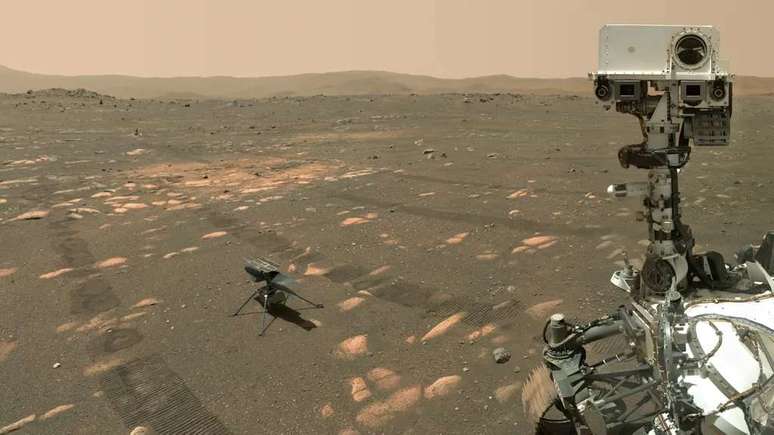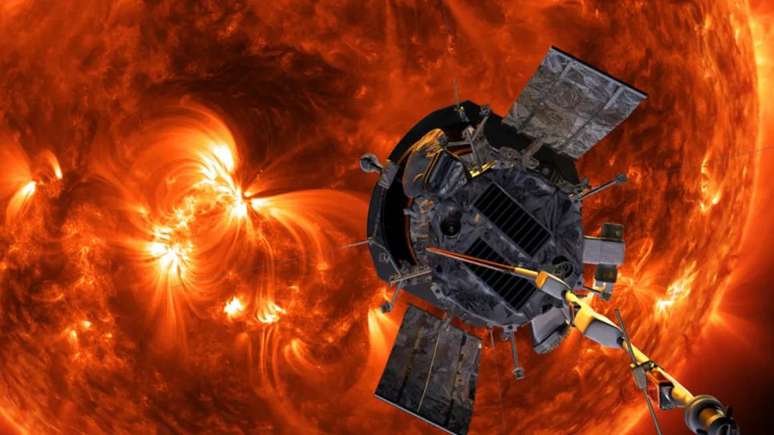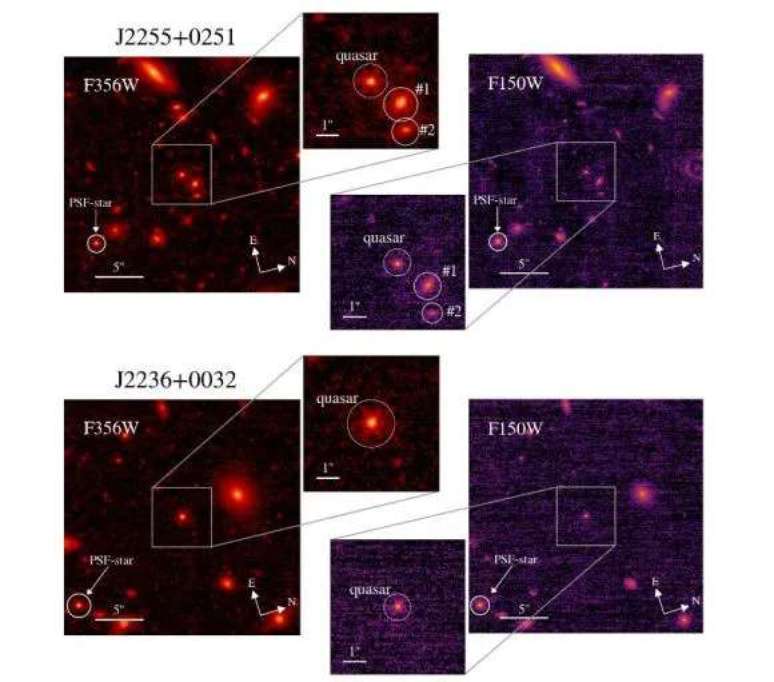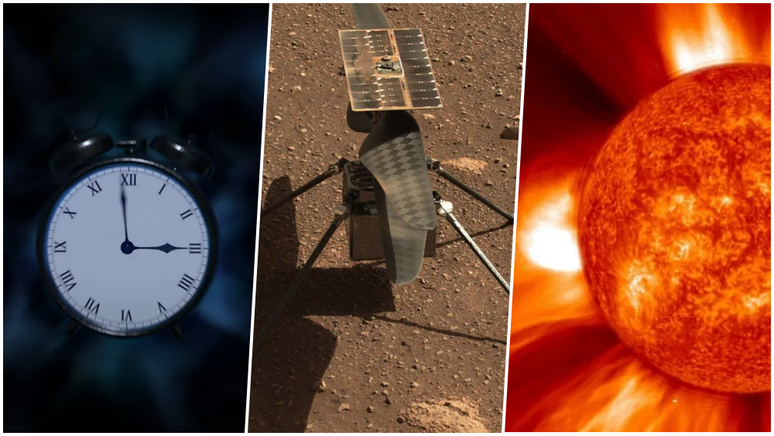Check out top space news from the week of July 1-7, 2023, and stay up-to-date on everything that matters most in the universe of astronomy!
Scientists announced some exciting discoveries during the week, including the furthest confirmation of the time dilation effect presented by theories of Albert Einstein. Also, the Sun has been very active and has been sending some “goodies” to the Earth.
Check out the roundup of these and other news stories that have garnered attention over the past few days.
Time dilation in the young universe
The scientists detected the effect of time dilation, one of the predictions of Albert Einstein’s Theory of General Relativity, observing 190 quasars from 2.45 to 12.17 billion years ago. These quasars flash about five times slower than those closest to Earth, which means that time in the ancient universe is five times slower than ours.
With time dilation, objects far away from us move slower than nearby ones because space is constantly expanding, and as a result, time itself expands together (time and space are inseparable). This effect has already been observed in objects such as supernovae, and this is the first time it has been observed in the distant universe.
Ingenuity contact after 63 days of silence
The Ingenuity helicopter has been silent since April 26, the month in which it completed its 52nd flight to Mars. Now finally resumed communications with the mission team in the ground. There were 63 days of no broadcasts until everything returned to normal on June 28th.

The problem wasn’t the helicopter instruments, but the Martian geology. After the last landing, Ingenuity and the Perseverance rover faced communication problems due to the rough terrain, mainly because the rover was hidden behind a hill. This severed communication between the two, as Perseverance is responsible for transmitting the helicopter’s signal to Earth.
Double dose coronal mass ejections
Two coronal mass ejections have been released from the Sun this week, with its particles reaching Earth between Friday and Saturday. At the time of writing, the forecast is for G1 (minor) class geomagnetic storms for the weekend.
Our #Sun celebrate #4th July with its special fireworks! We have two partially headed for Earth #solar storms (aka CME) coming soon. The second storm will catch up with the first giving us a 1.2 punch. Model forecasts show a likely impact on July 7. I will post NASA the model runs after. pic.twitter.com/gtJwgcYS4Z
—Dr. Tamitha Skov (@TamithaSkov) July 5, 2023
The first ejection was slower, while the second one travels through space at a higher speed, with the possibility of a “direct hit”. Neither event poses a risk other than brief interruptions in radio signals and weak fluctuations in the power grid.
The Super Moon has been shining since 03/07
A Monday Full Moon (3) it began early, when it was not yet possible to observe it, but it became dazzling around 6 pm until early morning on Tuesday (4). The nickname “Supermoon” is given because our natural satellite is very close to its perigee, i.e. the point in its orbit where it comes closest to the Earth.
During a supermoon, the lunar disk can appear up to 30% brighter and up to 14% larger than usual, although this difference can be difficult to distinguish. And of course the latest photos of the supermoon have invaded social networks, some of which have brought compositions with beautiful scenery.
Parker Solar probe and its sixteenth close approach to the Sun
NASA’s Parker Solar Probe made another approach to the Sun during Monday (3), remaining about 8.5 million kilometers from the solar surface. This was the sixteenth time the spacecraft has performed this maneuver to collect data from our star.

At a speed of more than 585,000 km/h, the spacecraft passed through the solar corona and faced temperatures close to 1 million degrees Celsius. Its instruments were well protected (after all, it was designed for this type of mission!), and remained at 29.4ºC. The last approach, three months ago, took place just 1.6 million kilometers from the solar surface.
The passage of the asteroid 2019 LH5 near the Earth
Another the asteroid came to say goodbye, passing relatively close to our planet. On Friday (7), it was the turn of 2019 LH5, with more than 200 m in diameter, to pass close to the Earth at about 5.7 million km. It was a very safe approximation, as it is equivalent to 15 times the distance between the Earth and the Moon.
The potentially dangerous asteroid 2019 LH5, imaged last night by our robotic telescopes. 🔭📷
We’ll show it LIVE tomorrow night, as part of our @AsteroidDay Celebrations of 2023!
🛑 More: https://t.co/SvnaZEZptQ pic.twitter.com/U9nQVwEqUp
— Virtual Telescope (@VirtualTelescop) July 5, 2023
Even though it was so far from Earth during its approach, 2019 LH5 is considered a potentially dangerous object. However, there is no risk of an impact in the next 100 years and we will likely stay away from it for much longer.
The mass ratio of black holes to galaxies
Scientists used the James Webb telescope to study quasars, galaxies with active nuclei formed by supermassive black holes that feed on matter. They discovered that there is a relationship between the mass of supermassive black holes and their host galaxies.

Until then, astronomers could only measure the total mass of a distant quasar—the sum of the mass of the black hole and its host galaxy. Now, with James Webb, they were able to get the mass of objects separately.
With that, they found that one of the observed galaxies has 130 billion and another 30 billion times the mass of the Sun. In turn, its central supermassive black holes have 1.4 billion and 200 million solar masses, respectively.
This means that, as has been observed in much closer galaxies, there is a consistent relationship between the masses of galaxies and their supermassive black holes. The question that remains is: why? This is what astronomers will try to find out in future studies.
Trending on Canaltech:
- 6 things you need to know before using Threads
- Amazon Prime Day 2023 | The best advance offers
- BYD Dolphin “explodes” in sales and lowers entry-level electric prices
- Kindle Scribe Review | Amazon book reader turned into a notebook
- Amazon Prime Day | Cheap SSDs to save your “old” PC or notebook.
- Remember it? Winamp wins the version for Android and iOS
Source: Terra
Rose James is a Gossipify movie and series reviewer known for her in-depth analysis and unique perspective on the latest releases. With a background in film studies, she provides engaging and informative reviews, and keeps readers up to date with industry trends and emerging talents.




![Tomorrow Belongs to Us: What’s in store for Wednesday 22 October 2025 Episode 2058 [SPOILERS] Tomorrow Belongs to Us: What’s in store for Wednesday 22 October 2025 Episode 2058 [SPOILERS]](https://fr.web.img6.acsta.net/img/95/64/95643daa3fa690142f3135b300b4ef9d.jpg)


